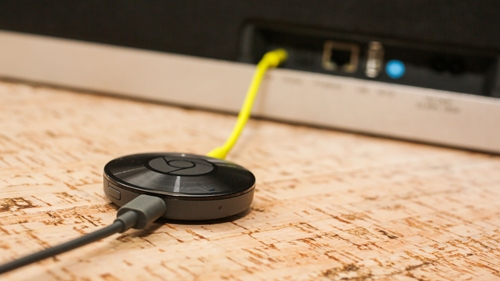

- #Chromecast for mac chrome how to
- #Chromecast for mac chrome install
- #Chromecast for mac chrome tv
- #Chromecast for mac chrome download
If you want to mirror your iPhone screen to a TV and watch something, and you do not have an Apple TV, there are several ways you can use it.ġ The first method is to mirror the iPhone via a cable.Ģ The second method is to mirror the iPhone to the TV with Roku.ģ The next method is to mirror the iPhone screen using Chromecast. How can I mirror my iPhone to my TV without Apple TV?

/001_how-to-chromecast-from-mac-4173974-5bbba270c9e77c005857bedd.jpg)
Read it and you will gain an understanding.
#Chromecast for mac chrome download
You will need to download a third-party application to stream content to the TV via the Chromecast device using the iPhone.
#Chromecast for mac chrome how to
Related : How to Get Sling TV on Vizio Smart TV Problems you may have Can I mirror iPhone to Chromecast This is the best way to put the screen of a Mac device or iPhone on a TV. You can now open the safari browser and view the content. Now you will see the iPhone screen on the TV screen. Then click Start Broadcasting from the menu that appears. Then set the resolution, mode, etc, and click on the Mirror Icon. Now several menus like Photos, Music, Browser, Screen Mirror will be displayed. It will then show you your Chromecast device. Now connect your iPhone and Chromecast device to the same wifi. Now connect the Chromecast device to the HDMI of your TV and go to the TV Source and select HDMI and set up the Chromecast device.
#Chromecast for mac chrome install
The first thing to do is go to the App Store from the iPhone and download and install the Chromecast Streamer app. The Apple M1's GPU prowess also has an inordinate impact on these test results, with Chrome both native and x86_64 translated on the M1 outrunning Chrome on the Ryzen U powered HP EliteBook.How do I connect my iPhone to Safari Browser Chromecast Safari enjoys an absolutely crushing advantage on this test, more than doubling even M1-native Chrome's performance. Chrome x86_64 under Rosetta2 takes a significant back seat to everything else here-though we want to again stress that it does not feel at all slow and would perform quite well compared to nearly any other system.įinally, MotionMark 1.1 measures complex graphic animation techniques in-browser and nothing else. This is the closest thing to a "traditional" outside-the-browser benchmark and is the most relevant for general Web applications of all kinds-particularly heavy office applications such as spreadsheets with tons of columns, rows, and formulae but also graphic editors with local rather than cloud processing. Jetstream2 is the broadest of the three benchmarks and includes workloads for data sorting, regular expression parsing, graphic ray tracing, and more. Speedometer shows a massive advantage for M1 silicon running natively, whether Safari or Chrome Chrome x86_64 run through Rosetta2 is inconsequentially slower than Chrome running on a brand-new HP EliteBook with Ryzen U CPU. This is probably the most relevant benchmark of the three for "regular webpage," if such a thing exists.
/001_how-to-update-chromecast-4628168-8f681ebf21354b27a25dd209fd25fdab.jpg)
The first benchmark in our gallery above, Speedometer, is the most prosaic-the only thing it does is populate lists of menu items, over and over, using a different Web-application framework each time. dmg is available today, and-as expected-it's significantly faster if you're doing something complicated enough in your browser to notice. That was and still is a true statement we find it difficult to believe anyone using the non-native binary for Chrome under an M1 machine would find it "slow." That said, Google's newer, ARM-native. Further Reading Hands-on with the Apple M1-a seriously fast x86 competitor In our earlier testing, we declared that the previous version of Google Chrome-which was available only as an x86_64 binary and needed to be run using Rosetta 2-was perfectly fine.


 0 kommentar(er)
0 kommentar(er)
